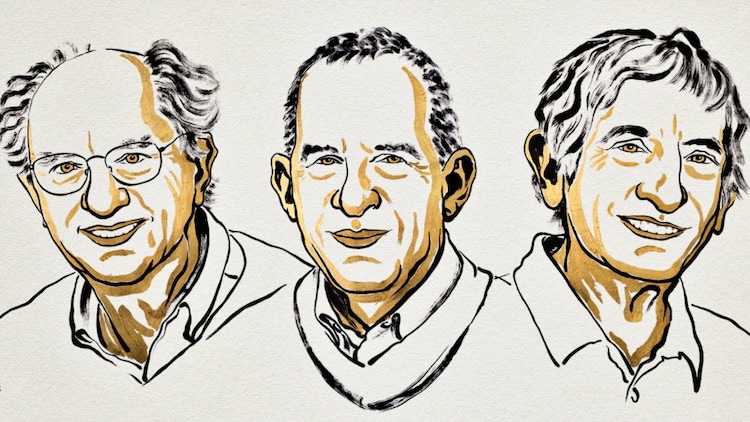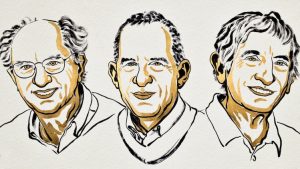Imagine a machine so clever it could solve in minutes what would take today’s most powerful supercomputers millions of years, a trillion-piece jigsaw puzzle completed in a blink. These are quantum computers, devices that don’t just test one solution at a time but explore countless possibilities all at once. Think of them as the ultimate multitaskers of the digital age, built to conquer problems that stump even the sharpest silicon minds.
And this isn’t science fiction or mere theory anymore.
Quantum computing is already breaking out of the lab and proving its worth in the real world. A striking example is the partnership between IBM and Moderna, where a hybrid quantum-classical system is modelling intricate mRNA sequences to fast-track next-generation vaccines against diseases like cancer.
In the financial world, the IBM-HSBC collaboration has reported a 34% improvement in algorithmic bond trading using quantum-inspired models, speeding up simulations that forecast market risks and protect trillions in global investments from sudden crashes.

At NASA’s QuAIL lab, researchers are teaming up with Google to pioneer quantum algorithms that solve massive optimisation challenges like designing satellite constellations for seamless global coverage. From disaster monitoring to delivering internet in remote corners of the world, quantum tools are quietly reshaping the way we think about connectivity and precision. For space science, they could soon help decode gravitational waves or simulate black hole mergers with astonishing accuracy, turning what once felt like sci-fi speculation into solvable science.
This year’s Nobel Prize in Physics, awarded to John Clarke, Michel H. Devoret, and John M. Martinis, marks a monumental step in making these mind-bending machines reliable for everyday breakthroughs.
Their pioneering work revealed that quantum phenomena, once thought too fragile or fleeting to capture, can, in fact, be harnessed inside handheld devices. Today, their discoveries power processors like IBM’s Eagle, Google’s Sycamore, and Rigetti’s Aspen, which use superconducting circuits to perform real quantum experiments.
WHY IT’S A BIG DEAL
To grasp their achievement, imagine a ball resting at the bottom of a steep, glassy hill. In our everyday world, getting it over the top takes a huge push, enough to fight gravity. But in the quantum world, something magical happens: the ball simply tunnels through the hill, disappearing on one side and reappearing on the other, as if phasing through solid rock.
Clarke, Devoret, and Martinis built circuits of superconducting wire, cooled to near absolute zero, where electricity flows endlessly without resistance, to make this phenomenon real. Their ultra-cold loops act like single, unified particles that can slip through barriers nature usually forbids. The challenge was immense: shielding these setups from the faintest vibrations, stray magnetic fields, even cosmic rays that could shatter the fragile quantum state.

Thanks to decades of patient experimentation blending theory with practical tinkering, we’re no longer just dreaming of quantum computing. Companies like IBM, Google, and Rigetti are now fabricating chips with hundreds of these “tunneling” qubits, running early prototypes that echo the Nobel trio’s groundbreaking demonstrations.
Each advance brings us closer to fault-tolerant quantum machines capable of handling real-world workloads without collapsing under errors.
INDIA SPEEDING AHEAD
In India, this revolution is gaining powerful momentum. The National Quantum Mission, launched in 2023 with a Rs 6,000-crore investment through 2031, signals a bold national bet on leapfrog technology. It’s more than a vision, it’s a roadmap: from building homegrown quantum hardware to crafting software ecosystems suited for India’s unique needs, like monsoon forecasting, cybersecurity, and personalised medicine.
Innovation hubs in Bengaluru, Pune, and Hyderabad are already buzzing with activity, training programs, scholarships, and interdisciplinary labs bringing together academia and industry.
Early milestones include quantum sensors for precision agriculture, secure communication networks to counter cyber threats, and simulators testing drug molecules for tropical diseases.
With steady funding and a growing pool of talent, India’s quantum ecosystem is maturing fast, shifting from tech importer to potential exporter. The possibilities shimmer on the horizon: quantum-optimised supply chains easing farmers’ burdens, unbreakable encryption shielding Aadhaar data, and smarter energy systems powering sustainable growth.
By weaving quantum technology into sectors like space and renewable energy, echoing ISRO’s ambitions, India isn’t just catching up. It’s aiming to lead the next great scientific frontier, turning national pride into a quantum-powered economy that could transform the lives of billions.
(This is an authored article by Manish Purohit. Manish is a solar energy and spacecraft solar panel expert with extensive experience in managing critical space missions, including Chandrayaan-2 and Mangalyaan)






